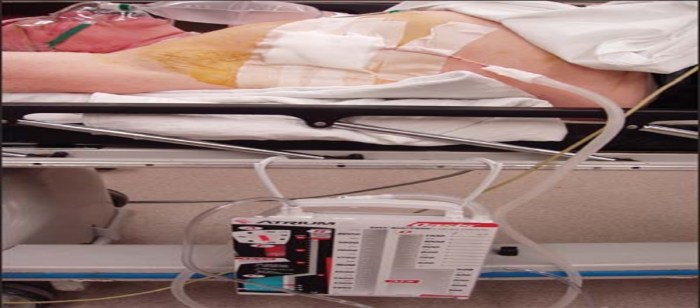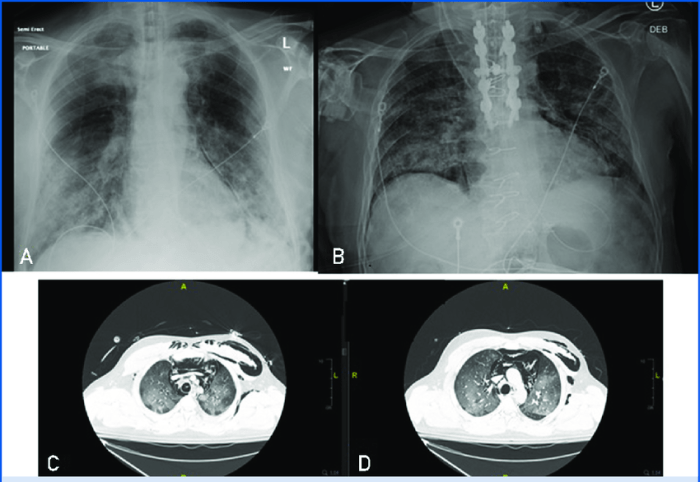You are transporting a stable patient with a possible pneumothorax – Transporting stable patients with suspected pneumothorax demands meticulous assessment, prompt management, and effective communication. This guide provides a comprehensive overview of patient evaluation, transport rationale, monitoring, documentation, and communication strategies, empowering healthcare professionals to ensure optimal patient outcomes.
Understanding the complexities of pneumothorax and its potential complications is crucial for safe and effective patient transport. This guide delves into the clinical manifestations, diagnostic criteria, and therapeutic interventions, equipping healthcare providers with the knowledge and skills to manage this condition confidently.
Patient Assessment: You Are Transporting A Stable Patient With A Possible Pneumothorax

The initial assessment of a patient with a possible pneumothorax includes:
- Vital signs:Assess the patient’s respiratory rate, oxygen saturation, and blood pressure. Tachycardia, tachypnea, and hypotension may indicate a tension pneumothorax.
- Physical exam findings:Auscultate the patient’s chest for decreased breath sounds on the affected side. Percuss the chest for hyperresonance.
- Medical history:Ask the patient about any history of trauma, recent chest surgery, or underlying lung disease.
The differential diagnosis for a patient with a possible pneumothorax includes:
- Pneumothorax
- Hemothorax
- Pneumomediastinum
- Pulmonary embolism
Management
The rationale for transporting a patient with a possible pneumothorax is to provide definitive care at a hospital. During transport, it is important to:
- Position the patient:Sit the patient upright and lean them slightly towards the affected side.
- Monitor the patient:Monitor the patient’s vital signs and oxygen saturation closely. Assess the patient’s respiratory status and level of consciousness.
- Insert a chest tube:A chest tube may be inserted to evacuate air or fluid from the pleural space. Indications for chest tube insertion include a tension pneumothorax, a large pneumothorax, or a pneumothorax that is not resolving with conservative management.
- Contraindications to chest tube insertion:Contraindications to chest tube insertion include coagulopathy, thrombocytopenia, and uncontrolled bleeding.
Documentation

The following is a sample documentation template for transporting a patient with a possible pneumothorax:
| Assessment | Intervention | Evaluation |
|---|---|---|
| Vital signs: | Oxygen administered | Patient’s respiratory status improved |
| Physical exam findings: | Chest tube inserted | Chest tube draining air/fluid |
| Medical history: | Patient transported to hospital | Patient’s condition stable |
Communication

It is important to communicate effectively with the receiving facility when transporting a patient with a possible pneumothorax. The following is a sample communication script:
- “This is [your name] from [your facility]. We are transporting a patient with a possible pneumothorax to your facility.”
- “The patient is a [age]-year-old [gender] with a history of [relevant medical history].”
- “The patient’s vital signs are: respiratory rate [respiratory rate], oxygen saturation [oxygen saturation], and blood pressure [blood pressure].”
- “The patient has [physical exam findings] on the [affected side].”
- “We have [interventions performed] for the patient.”
- “We are transporting the patient to your facility for definitive care.”
Expert Answers
What are the key signs and symptoms of pneumothorax?
Dyspnea, chest pain, tachypnea, and decreased breath sounds on the affected side.
What is the rationale for transporting a stable patient with suspected pneumothorax?
To facilitate definitive diagnosis and management, including chest tube insertion if necessary.
What are the indications for chest tube insertion in pneumothorax?
Persistent air leak, hemopneumothorax, tension pneumothorax, or significant respiratory distress.